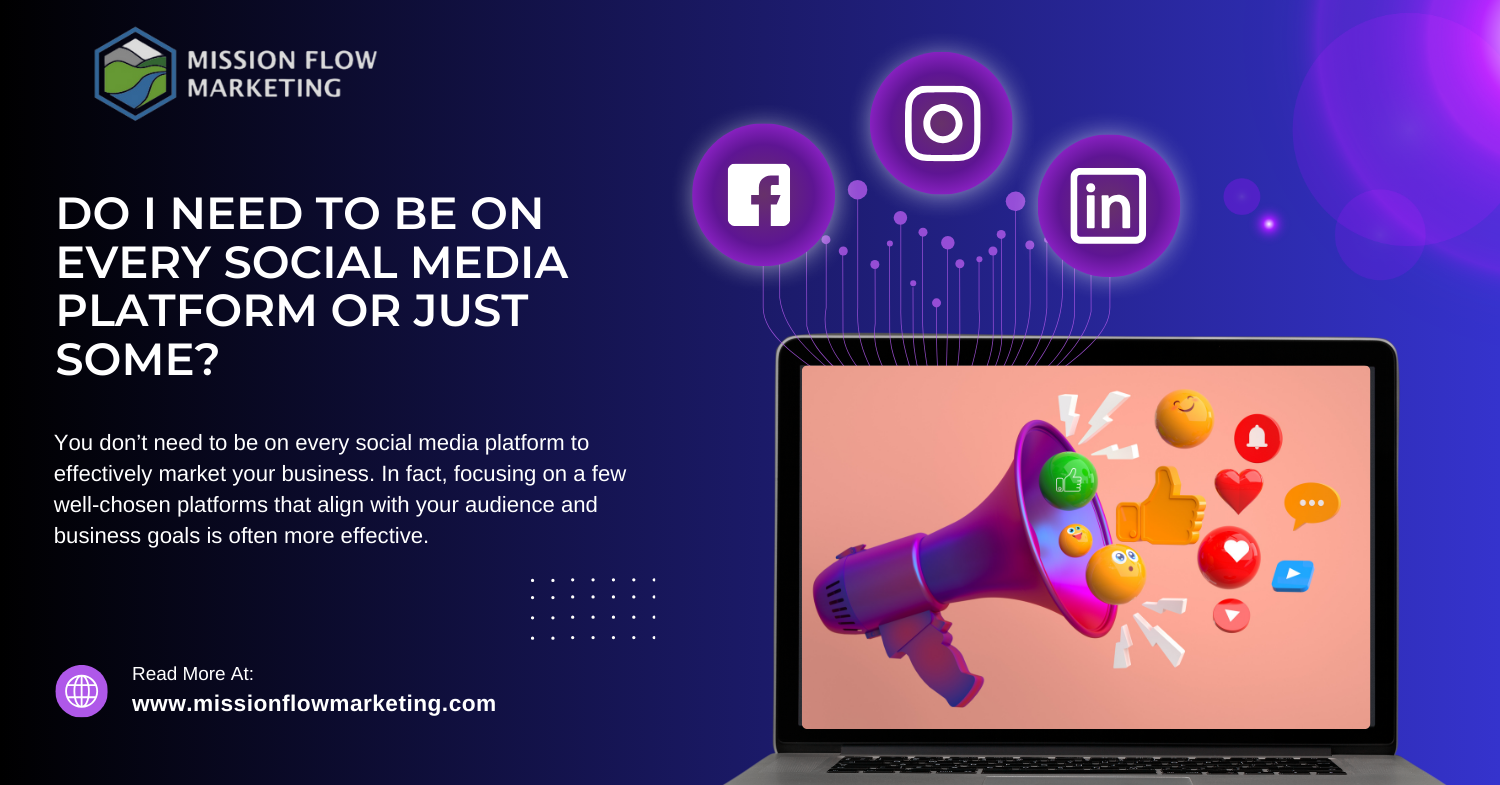
You don’t need to be on every social media platform to effectively market your business. In fact, focusing on a few well-chosen platforms that align with your audience and business goals is often more effective. Here’s how to decide which social media platforms are worth your time and resources:
Rather than being on every platform, choose the ones that best suit your audience and business goals. Mission Flow Marketing can help you develop a social media strategy tailored to your brand, ensuring you focus on the platforms that provide the most value. Contact us today for a free consultation to discover which social media platforms are right for you.